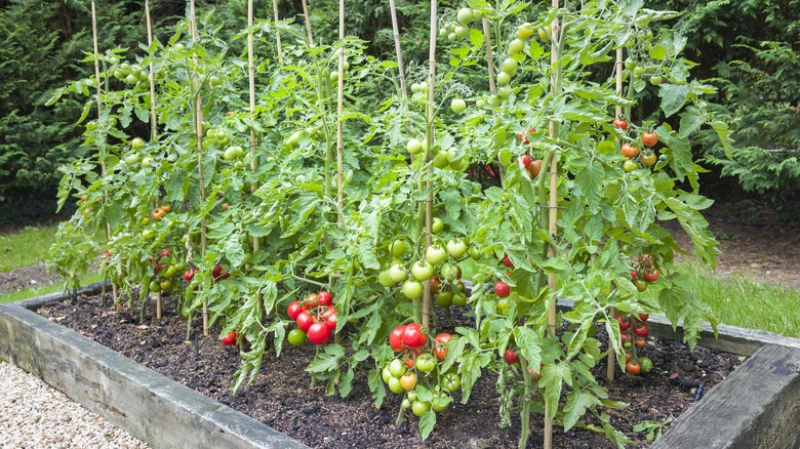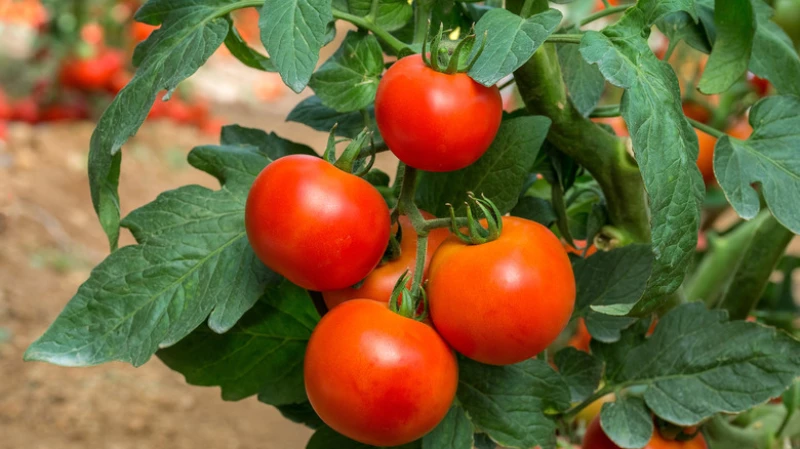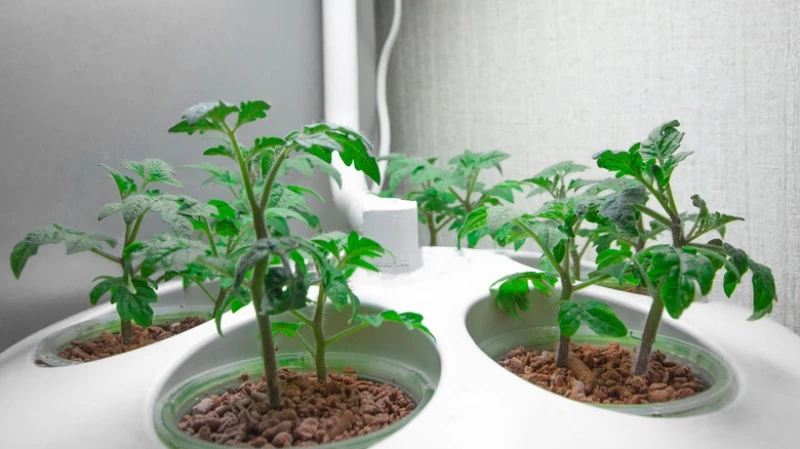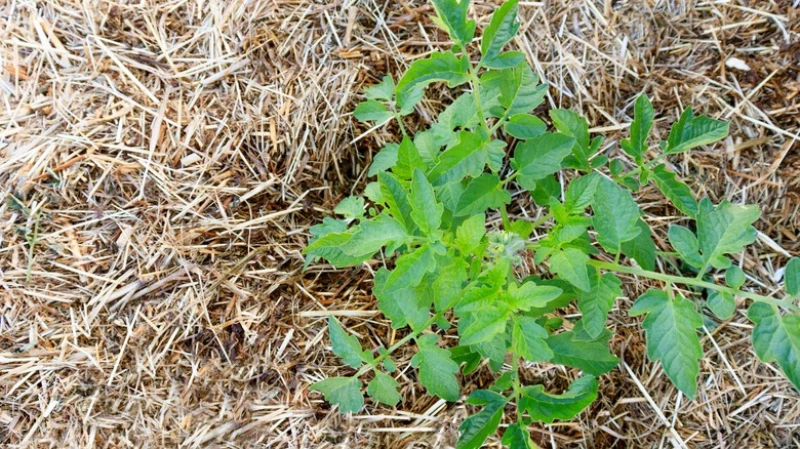Looking to take your tomato-growing skills to the next level? Imagine a stroll through your garden, with plump, red tomatoes just waiting to be picked. Tomatoes are the shining stars of any vegetable patch, but many gardeners struggle to get a bountiful harvest. "How can I grow great tomatoes?" you wonder. It's a mystery every gardener faces. Luckily, this article presents 18 clever tips for growing tomatoes in your garden - from using everyday items to fight off pests, diseases, and nutrient deficiencies to the hidden trick of planting your seedlings deeper.
Achieving a flourishing tomato harvest doesn't have to be a distant goal only for experienced gardeners. Even beginners can enjoy bountiful yields with the right knowledge. The satisfaction of picking tomatoes from your own garden instead of buying them from the store is incomparable. And for those inclined towards eco-friendly practices, there's good news. You can nurture vibrant tomato plants with juicy fruits without relying heavily on synthetic chemicals like fertilizers, pesticides, and fungicides. These tomato growing tips incorporate natural alternatives to keep your plants healthy, protect your soil's vitality, and safeguard pollinators.
1. Soil Preparation is Key
Picture your soil as a vibrant ecosystem filled with worms and microorganisms, all working together to support the growth of your tomatoes. Start by enriching it with composted manure, often referred to as the "black gold" for plants. Another excellent addition is fish remnants, which decompose slowly, providing a continuous supply of nutrients for your plants. Tomatoes thrive in slightly acidic to neutral soil, with a pH level ranging from 5.5 to 7.0. Test your soil with a kit, and if it's too acidic, a sprinkle of lime can help, while sulfur can lower the pH if it's too alkaline.
2. Select the Right Tomato Varieties
Embarking on a tomato-growing journey without selecting the right variety is like setting sail without a compass. For container gardening or canning, bushy determinate types like Roma and Florida 47 are ideal, completing their life cycle in four to six weeks. On the other hand, if you have a long growing season, indeterminate varieties like Black Krim, Big Beef, Sungold, or Cherokee Purple will keep producing until the frost hits.
3. Ensure Adequate Sunlight
To thrive, tomato plants need six to eight hours of sunlight daily. Gradually acclimate seedlings to outdoor conditions before transplanting to prevent shock. Start with a few hours of sunlight and increase exposure over several days. After transplanting, ensure taller plants do not shade your tomatoes.
4. Plant Deeply
To enhance the growth of your tomato plants, consider supporting them as they reach new heights. A sturdy cage or trellis can provide the necessary structure for the plants to climb and flourish. By offering this support, you not only prevent the stems from bending or breaking under the weight of the fruit but also ensure proper air circulation, which reduces the risk of diseases. Additionally, supporting your tomato plants allows for easier access during maintenance tasks such as pruning, watering, and harvesting. Embrace the upward journey of your tomatoes and watch them thrive with the right support system in place.
To ensure your tomato plants thrive and produce abundantly, pruning is a key practice. By removing suckers – the small shoots that sprout in the crotch joint of two branches – you direct the plant's energy towards fruit production rather than foliage growth. This strategic snipping also improves air circulation around the plant, reducing the risk of diseases like blight. To master the art of pruning for prosperity, equip yourself with a sharp pair of pruning shears and regularly inspect your tomato plants for any unwanted growth. Remember, a well-pruned tomato plant is a happy and fruitful tomato plant!
When it comes to tomato pruning, your main focus should be on removing the suckers, those eager shoots that sprout between the stem and a branch. By getting rid of these suckers, you direct the plant's energy towards producing larger tomatoes. Make sure to also remove any diseased leaves or those touching the ground. As late summer approaches, consider topping off your indeterminate tomato plants by pruning the top. This might seem counterintuitive, but it helps prevent the plant from wasting energy on non-fruitful growth. Be cautious though, over-pruning or cutting the wrong parts can stress the tomato plant excessively.
When it comes to caring for your tomato plants, mulching is a superhero in disguise. Not only does it keep the soil moist and cool, but it also acts as a shield against the scorching heat and pesky weeds. By laying down a protective layer of organic matter like straw, grass clippings, or wood chips, you create a barrier that prevents soil-borne diseases from splashing onto your tomato plant's leaves during unexpected showers.
Monitor and manage pests and diseases
Keeping a close eye on your tomato plants is crucial in preventing and managing pests and diseases. Regular checks help you spot early signs of distress caused by cutworms, aphids, leaf spot, and blossom end rot. Introducing beneficial insects like ladybugs, wasps, and lacewings into your garden can help control pests such as aphids and tomato hornworms. Additionally, rotating the location of your tomato plants each year can help prevent soil-borne diseases and ensure the health of your tomatoes.
Optimize for pollination
Now, onto the world of pollination, where the flowers transform into luscious tomatoes. Even though tomato flowers are self-sufficient warriors with both male and female parts, sometimes (for example, when it's excessively humid or cold), they need a little nudge to prosper. Here's where you step in as the ultimate matchmaker. Creating a buzz (quite literally) by attracting pollinators with fragrant allies like chives and thyme ensures most flowers transform into juicy tomatoes. Furthermore, in greenhouses, indoors, or when the bees are busy elsewhere, becoming the pollinator yourself — gently vibrating the flowers with a finger, electric toothbrush, or pencil every three days— ensures no flower goes unnoticed.
One of the most surprising hacks for growing tomatoes involves something you likely have in your kitchen pantry — baking soda. A mere quarter cup scattered around the base of your tomato plants can help combat pests by producing carbon dioxide when ingested. This not only deters rabbits and snails but also adjusts the soil's pH level, making it less acidic. For an added protective measure, mix 1 tablespoon of baking soda, 1 teaspoon of vegetable oil, and a few drops of dish soap in a gallon of water and spray this solution weekly on your tomato plants to shield them against fungal diseases.
Pairing tomatoes with companion plants can offer a range of benefits, from deterring pests to improving soil health. Plants like basil, parsley, cilantro, and garlic emit fragrances that act as a natural pest repellent, keeping aphids, thrips, and spider mites at bay. In the world of companion plants for tomatoes, options like thyme, marigold, and chives not only deter pests but also attract essential pollinators like bumblebees. Additionally, humble nasturtiums provide a living mulch that helps retain moisture, prevent erosion, and keep tomato roots cool.
When it comes to container gardening, not all tomatoes are created equal. For the best results, opt for compact varieties like Tiny Tim and Dwarf Eagle Smiley. Choose a pot that is at least 14 inches in diameter to give your tomatoes enough space to grow. Use an artificial potting mix and make sure to create slits at the base of the pot for proper drainage. Once the threat of frost has passed, plant your tomatoes deep in the soil, and remember to water and fertilize them regularly. If unexpected chilly nights occur, protect your plants with horticultural fleece to keep them warm.













